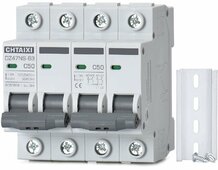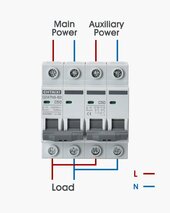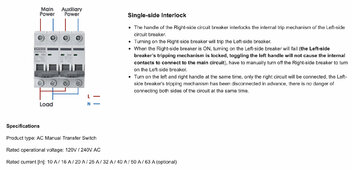

I'm looking for a transfer switch and found these on amazon, link to the product (not affiliated) .. they are dirt cheap, sell for about $15-$20 and offer a very simple transfer switch mechanism, lift left side up and right side goes down and vice versa. I'm wondering if they can be considered safe if installed with other breakers. Has anyone ever used these types or why not? Any feedback would be appreciated







